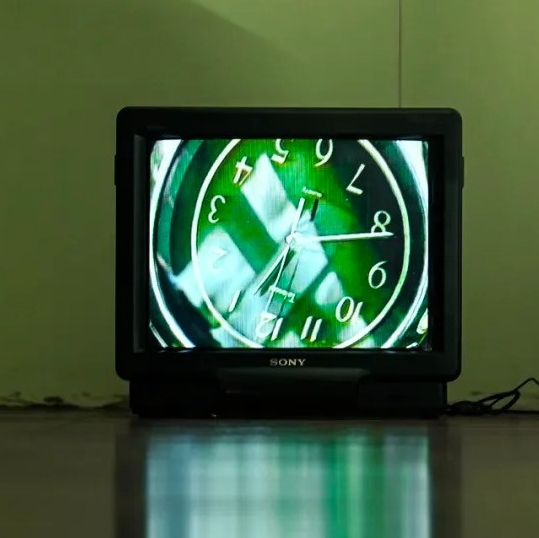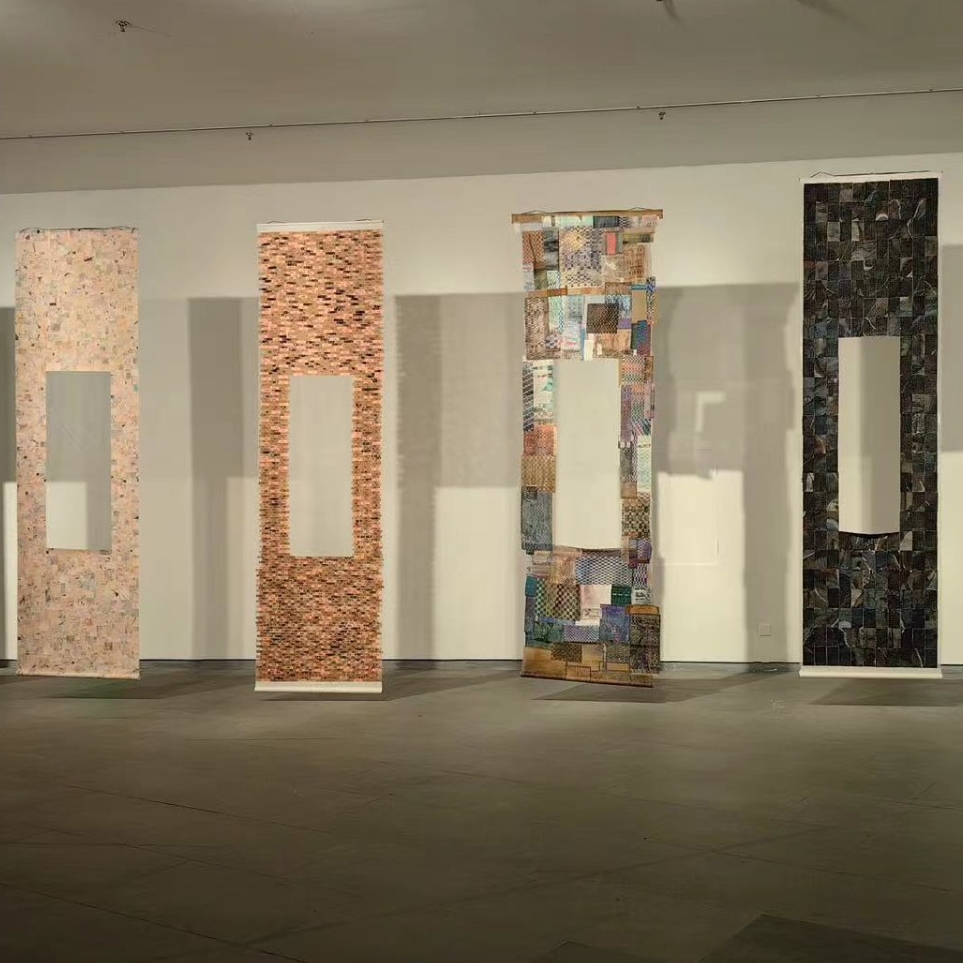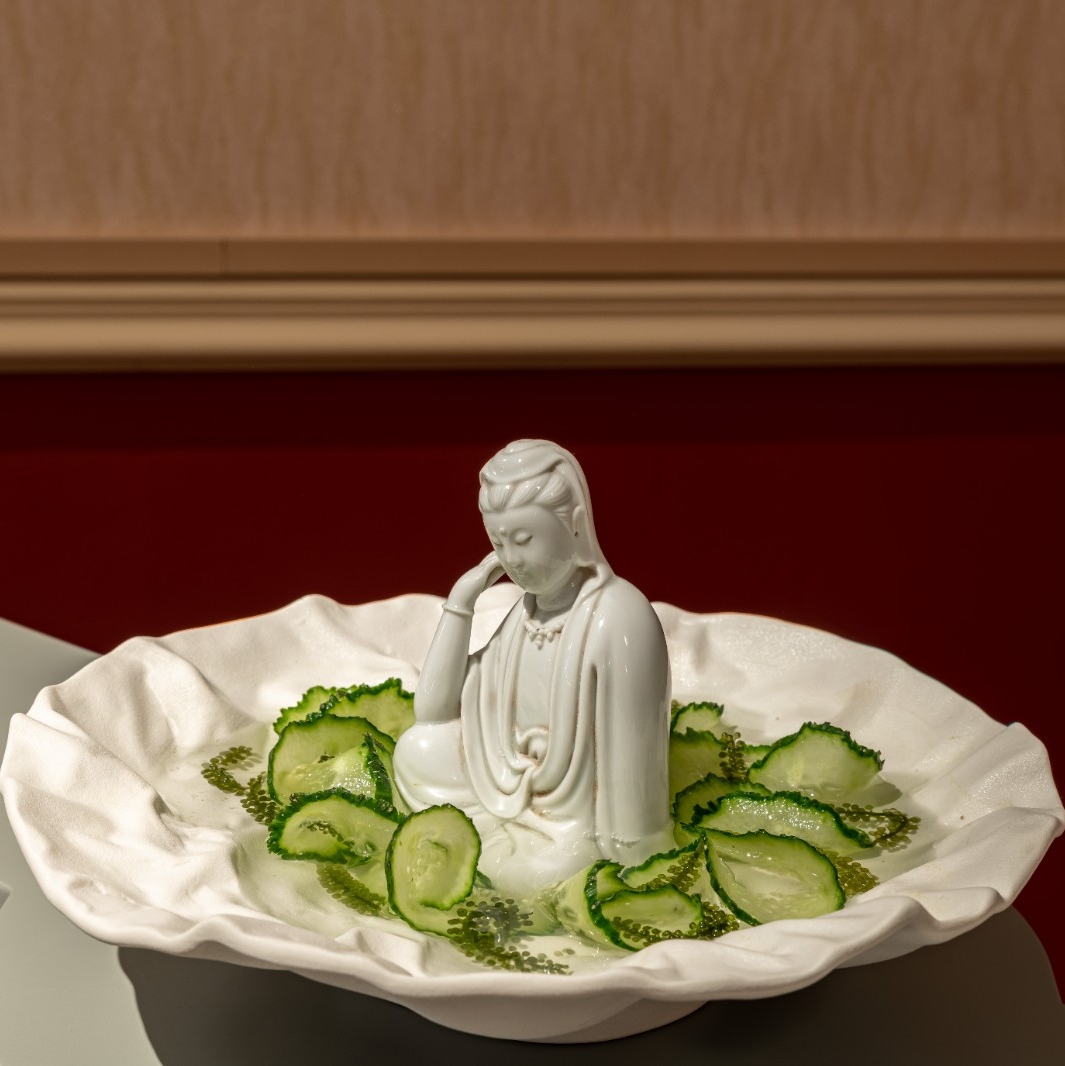 Although when the pandemic outbreak hit in early 2020, epidemiologists predicted that we might have to deal with its influences for a long time, it is only after these three years that we can truly be aware of what this means. In the art world, quarantine and social distancing restrictions have forced the postponement and cancellation of countless exhibitions, and even permanent closure of many art institutions. In this case, searching for an alternative exhibition space has become an inevitable choice. At the beginning of the pandemic, online exhibitions were considered to have high expectations, and major institutions built online platforms to embrace audiences at home.
Although when the pandemic outbreak hit in early 2020, epidemiologists predicted that we might have to deal with its influences for a long time, it is only after these three years that we can truly be aware of what this means. In the art world, quarantine and social distancing restrictions have forced the postponement and cancellation of countless exhibitions, and even permanent closure of many art institutions. In this case, searching for an alternative exhibition space has become an inevitable choice. At the beginning of the pandemic, online exhibitions were considered to have high expectations, and major institutions built online platforms to embrace audiences at home.
The pandemic has dramatically changed the graduation season of the Central Academy of Fine Arts (abbr. CAFA Graduation Season). The graduation season in 2020 has become the first online graduation exhibition in the history of CAFA, and also initiated a new form for the graduation season. In the past five years, we have gradually become accustomed to welcoming a grand festival, namely, graduation works spanning all over the campus, newfangled celebrating events, and audiences both inside and outside the Academy. Since 2020, the Central Academy of Fine Arts has held online graduation seasons over the three consecutive years. "Graduation Exhibition Never Go Offline" was a slogan proposed in 2020. This commitment also enables us to span time and space to observe the changes and development of the online graduation season over the past three years.
2020: It Stepped into the Virtual Space

Homepage of “Then & Now: 2020 CAFA Online Graduation Season”
The pandemic hindered the gathering of graduation works. At the same time, the technique of 360° panoramic photography, which is frequently seen in the digital exhibition hall and used by the Palace Museum and the National Museum of China, is impossible to realize as well. Therefore, the online graduation exhibition this year was like “a performance without physical objects”. Although it is the first time switching to online, facing this challenge, the 2020 Graduation Season of CAFA is not lacking in experience due to the cooperation between the School of Design at CAFA and Central Saint Martins, the University of the Arts London, on the online project “Curating In A Time of Crisis” a few months ago. Many members of the curatorial team have participated in the design of the graduation season, presenting the biggest highlight of the graduation season in 2020, namely, the virtual CAFA Art Museum space constructed through 3D models.




Screenshots of “Then & Now: 2020 CAFA Online Graduation Season”
In the “3D Virtual Graduation Exhibition”, the works of graduates from more than ten faculties are distributed over five venues. Unlike high-investment movie special effects, the limited cost of the exhibition is bound to be impossible to restore the real light and shadow effects. Although the 3D space rendered by the Unity engine accurately reproduces the structure of the art museum and presents fine details, it is difficult to satisfy the audience’s vision as they have been spoiled by Hollywood movies. However, digital imagery does not depend on realism. In the final analysis, the audience expects creativity, which is the key element in communication. Therefore, how to visually capture the audience relies more on the skills of visual design.


Screenshots of “Then & Now: 2020 CAFA Online Graduation Season”
Exploiting the unique potential of virtual spaces is one way. The online space is more malleable than the offline space, in which various design elements can break through the limitations of the two-dimensional surface and step into the entire virtual space. The visual design of the online graduation season takes the rectangle as the basic unit, which appears in every corner from the moment you enter the web page. Specifically, the showroom of the School of Design is undoubtedly the most distinctive. On the third floor of the art museum is the largest space apart from the hall, the School of Design uses simple straight lines and white to connect all the exhibition walls into a whole. What attracts the most attention is the floating images in the center of this showroom. By simply touching it, we will be taken to a planet which is outlined with lines and formed by the words of teachers and students. Online exhibitions redefine the exhibition space. It can be said that the previous exhibitions decorated the original exhibition space using a specific design, while the virtual space makes further flow and deformation possible. In the past, we were in front of the image. Nowadays, however, we are immersed in numbers of images, drifting with them.



Screenshots of “Then & Now: 2020 CAFA Online Graduation Season”, the School of Design
Another way is to explore using perspective. The 3D virtual graduation exhibition adopts a “click and move” route design through most digital exhibition halls, which also means that the viewpoints available to the audience are all under the consideration of the curatorial team. In the digital exhibition halls of primary museums, relying on panoramic photography, the viewing perspective usually adopts the assumption of eye-level. However, in the 3D virtual graduation exhibition, the line of sight is not limited to the common perspective. Taking the showroom of the Department of Sculpture as an example, in the huge open space, one of the viewpoints is set in the air at the center of the scene—overlooking from this point, five dividing walls form a flower pattern. The viewing angle that is impossible in reality makes us not only notice the design of the exhibition itself, but also realize the unique meaning of the architectural space of the museum.


Screenshots of “Then & Now: 2020 CAFA Online Graduation Season”, the Department of Sculpture
The emphasis on the art museum space in the virtual graduation exhibition also interprets the value of spending a lot of energy to rebuild the art museum space, namely, the connection between people and the campus. When we discuss the age of images in which we live today, a prominent problem with digital images is that they are too “international”, which seem to be global but actually lack a local flavor. We shorten the distance to any place in the world through the screen, but also lose the real experience of wandering in the space. For graduates, in their years of study, exhibiting in an art museum is a ritual scene that they are always expecting. Therefore, the space of CAFA Art Museum has an irreducible external sensibility. Meanwhile, the restored scenes also carry the nostalgia of the graduates for the familiar environment and scenery.
2021: All Returned to Reality

Homepage of “Ready To-Go! 2021 CAFA Graduation Season”
The return to physical space of 2021 graduation season aroused a heated discussion among various media. There is no doubt that the CAFA Graduation Season has become—at least in the city of Beijing—an important festival in public cultural life. In the virtual world, physical contact is not required, but obviously, our bodies are always hungry for a sense of satisfaction. Despite the processes such as appointments, scanning codes, etc., the enthusiasm for physical space was obvious for both students and off-campus audiences. Compared with the previous year, the online graduation exhibition in 2021 was less creative but more stable. The design of the virtual exhibition has returned to the actual shooting, which is closer to the common digital exhibition hall. In this regard, what is the unique value of online exhibitions?



Screenshots of “Ready To-Go! 2021 CAFA Graduation Season” Online Exhibition
Although gaining valuable moments of release amid the long pandemic, the impact on the graduation season was still intuitive. The temporary exhibition hall "white shed", which has never been absent from offline exhibitions before, was missing, and the teaching buildings of the School of Design and the School of Architecture were no longer open due to pandemic prevention considerations. Thus, the undergraduate exhibition has been split, the exhibition period has been extended, and the exhibition space has been compressed. From the postgraduate degree show to the two periods of the undergraduate degree show, almost all the works of nearly 500 graduates in each period were concentrated in the art museum, which made it difficult for the viewer to resist the test of energy from the massive amount of information.


Screenshots of “Ready To-Go! 2021 CAFA Graduation Season” Online Exhibition
In this regard, the online exhibition has shown its unique value, providing meaningful supplements to offline shows. When offline exhibitions bring forward higher demands on attention and physical strength, online exhibitions offer a fast and convenient way instead. Through the virtual exhibition hall, we can easily browse the face of the whole exhibition, marking the works that attract us. In this sense, the online exhibition itself also acts as a guide.


Screenshots of “Ready To-Go! 2021 CAFA Graduation Season” Online Exhibition
The graduation season in 2021 was the only graduation season that has realized both online and offline exhibitions so far. In other words, it was completed by both online and offline parts. Online exhibitions provide a more relaxed and open way of viewing, while the lack of texture (or “material quality”) of digital images that were criticized by others is guaranteed by offline exhibitions. As a result, live-action photography did not hinder but instead shortened the distance between us and offline exhibitions. The 2021 online graduation season no longer undertook the heavy responsibility of the exhibition alone, which shows how the pandemic has profoundly changed our concept of an exhibition. Although the Internet has made life smooth during the pandemic, the long-term home life has made us realize the feelings and experiences that the virtual world cannot replace. Unlike most of the digital exhibitions that emerged in the early days of the pandemic, the 2021 online graduation season reminds us everywhere that the vision is not everything. If the absence of the body is inevitable, rather than blindly looking for alternative virtual means, it is necessary to recognize the limitation of a digital exhibition. In acknowledging that we cannot survive alone,2022: It Was Intended to Keep Time

Homepage of “Loading…2022 CAFA Online Graduation Season”
Due to repeated and continuous pandemics, the Central Academy of Fine Arts was not able to resume offline teaching in the first half of this year, so the graduation season has finally returned to online. After viewing the CAFA Graduation Seasons of 2020 and 2021, 2022 CAFA Online Graduation Season might be a little dull. Although the “Digital Twin Campus of CAFA” combines real-time and weather data that changes unpredictably, it is challenging for this digital landscape to maintain a long-term appeal for audiences who have become accustomed to the update of online image technology. As far as the appeal of digital imagery is concerned, the experience and heritage are of limited help, which means that even for an academy of fine arts with a long history, exploration and choice are still necessary.
2022 CAFA Online Graduation Season is undoubtedly a bold choice as the virtual showrooms that caught attention in the previous two years were completely removed. The main body of the exhibition is a part that we have not mentioned before, namely, a detailed electronic catalogue of all the graduates’ works, which has been recognized as the “Online Graduation Exhibition” for the past two years. The bold subtraction made in the curatorial strategy enables us to rediscover the meaning of this relatively traditional form of display.



Screenshots of “Loading…2022 CAFA Online Graduation Season”
The catalogue refers to the museum’s tradition of collecting, exhibiting, and researching, which is more “academic” in this sense. In Über das Neue. Versuch einer Kulturökonomie, art historian Boris Groys points out that the mechanism of “archives” continues to function in a contemporary context that promotes the innovation effect. The museum preserves the memory of art history and becomes a real part of art. The internet is an archive in the standard sense, formally returning to the old coding tradition of knotted notes, in which all messages were reduced to a permutation of 0s and 1s. At the same time, decoding today requires not primarily verbal skills but digital skills.

Screenshots of “Loading…2022 CAFA Online Graduation Season”
 Screenshots of “Loading…2022 CAFA Online Graduation Season”
Screenshots of “Loading…2022 CAFA Online Graduation Season”When we emphasize the differences between online and offline exhibitions, we acquiesce in the visual differences in different spaces, while the online graduation season as an archive focuses on time. Groys reminds us that all theoretical and artistic production is ultimately oriented towards systems of historical memory. Our visual experience is precisely the sum of images nowadays. New visual experiences mean new desires and aesthetics. The archive is an interruption of this desire—as we said earlier, the desire of the eyes never represents the whole story.
Utilizing digital technology doesn't mean relying on popular viewing logic. Today, we are educated to approach things through viewing, ignoring that viewing signifies distance foremost. The freedom that a short video gives us is that we can freely swipe through each image, but in principle we are prohibited from turning it off. In this regard, viewing the graduation exhibition requires just the opposite—it emphasizes reading rather than viewing. That explains the reason of juxtaposing three years of online graduation seasons in this article. It is the digital technology itself that makes this juxtaposition possible, which corresponds to the beautiful promise of “never go offline”, and through “viewing” and “reading”, a new historical memory is slowly forming.
Text by Luo Yifei, translated by Emily Weimeng Zhou and edited by Sue/CAFA ART INFO
Image courtesy of CAFA Online Graduation Exhibitions.




























